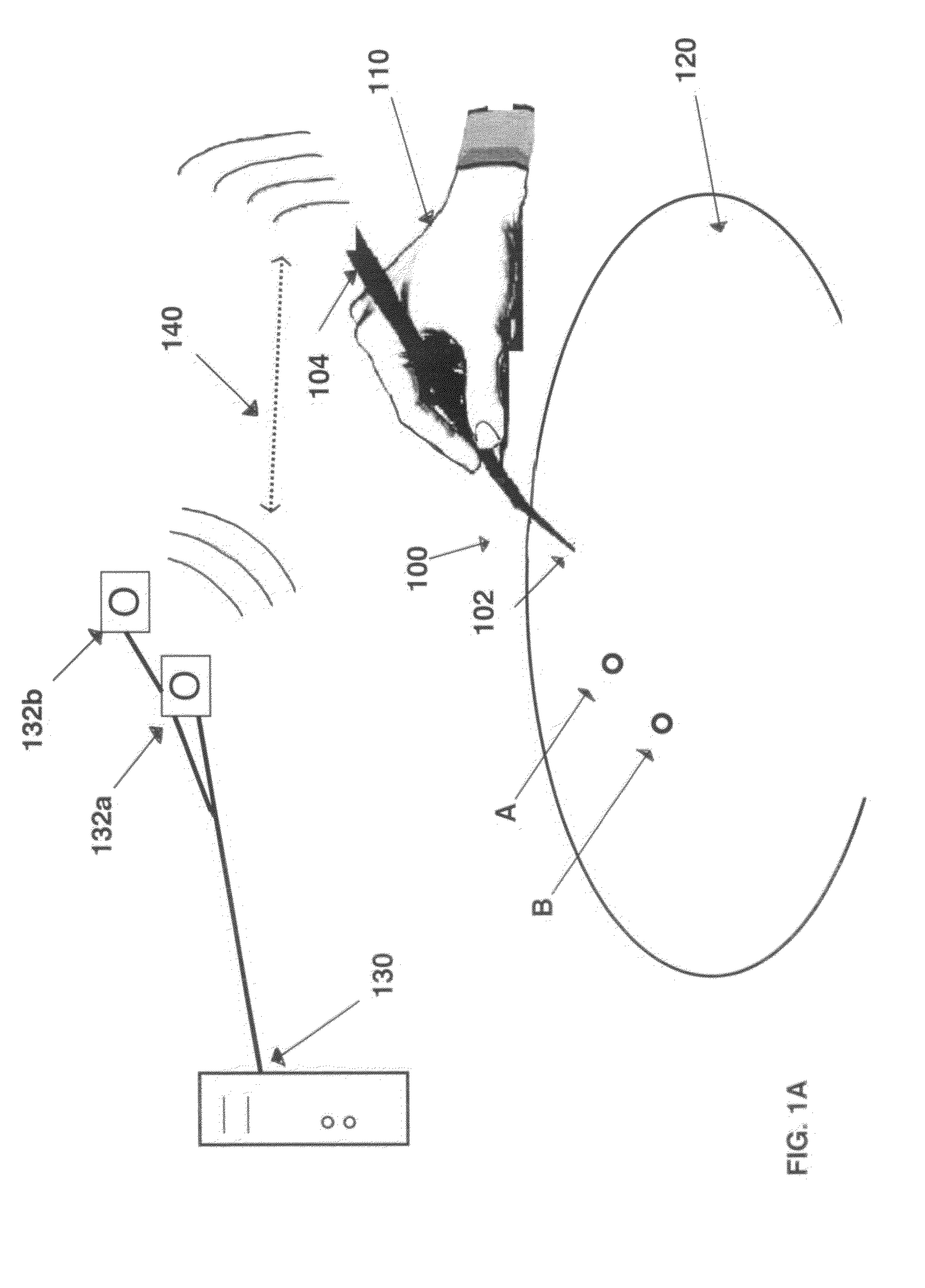Device and method for measuring anatomic geometries
a technology of anatomic geometries and devices, applied in medical science, surgery, diagnostics, etc., can solve the problems of deficient devices, systems and methods utilizing prior ar
- Summary
- Abstract
- Description
- Claims
- Application Information
AI Technical Summary
Benefits of technology
Problems solved by technology
Method used
Image
Examples
example 1
[0072]Measurement with the Probe
[0073]This calibration process is required for all possible motion tracking technologies. With most motion tracking systems, it is physically impossible to attach the tracking sensor at the tip of probe. With some motion tracking technologies such as electromagnetic motion tracking, the sensor may be attached to the tip of the probe but this creates another issue in sterilization of the sensors. To avoid these problems, the motion sensor is placed at the proximal position, that is, near the handle of the probe. Then a calibration process is required to define the relative location (x, y, z in three dimensional space) of the tip of probe with reference to the coordinate center defined at the location of tracking sensor.
[0074]The coordinate center for each tracking sensors are defined according to the type of tracking utilized. In optical tracking with an array of reflective markers the coordinate center is the physical center location ...
example 2
Operation Procedures for Measurement
General Overview
[0078]The system power is turned on. The probe is then introduced into the body to verify whether the tip of the probe can reach target. A continuous or discrete mode is selected from a control panel. A system / data acquitsion or start is initiated via, for example, a mouse, a foot pedal, a voice activation system, and / or gestured controlled system. Data collection begins, i.e., linear or point-to-point.
Discreet Mode: Line Segment
[0079]The operator moves the probe tip to a point of interest (initial point) and then activates data collection mode is activated (options: holding the data button, pushing a pedal switch, or saying “Start”). Two seconds after activating the data collection mode, the operator gets a confirmation, audible and / or visible, e,g., hears a continuous auditory tone which confirms that the data is being collected. The operator then moves to the final point of interest and activates data collection mode (options: h...
example 3
Measuring a Hernia Defect
[0083]The calibration and operation procedures for measuring a hernia defect in discrete mode, utilizing point-to-point, linear or non-linear, circumferential, or continuous data acquisition methods are substantially identical to the operation of the device as described in Examples 1 and 2. In a discrete mode for circumference measurement of the defect, after data collection is terminated, the system initiates a process called “Hernia Estimation”.
[0084]In “Hernia Estimation” the system displays simplified two-dimensional geometry of the hernia defect and the operator responds to the question “Will you accept this estimation (Yes / No). If the operator selects “No”, the operator will repeat the above steps until the operator obtains an acceptable estimation. If the operator selects “Yes”, the system will display a message “Estimation accepted”.
[0085]The operator selects options for the estimation of mesh shape (Oval / Specific). For an oval, the system creates an...
PUM
 Login to View More
Login to View More Abstract
Description
Claims
Application Information
 Login to View More
Login to View More - R&D
- Intellectual Property
- Life Sciences
- Materials
- Tech Scout
- Unparalleled Data Quality
- Higher Quality Content
- 60% Fewer Hallucinations
Browse by: Latest US Patents, China's latest patents, Technical Efficacy Thesaurus, Application Domain, Technology Topic, Popular Technical Reports.
© 2025 PatSnap. All rights reserved.Legal|Privacy policy|Modern Slavery Act Transparency Statement|Sitemap|About US| Contact US: help@patsnap.com



